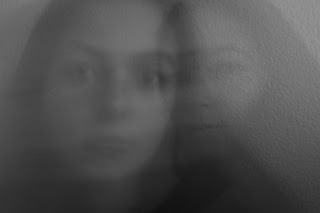File Format
Three advantages of a RAW file:
-the file(s) are higher in terms of dynamic range
-file(s) shot in RAW can be admissible as evidence in court
- file(s) can be proprietarily formatted
One disadvantage of a RAW file:
-photos shot in RAW require special software to be able to view the files
Three advantages of a JPEG file:
-the file(s) will appear sharper
-the file(s) can be immediately printed
-most file(s) do not need a lot of correcting most of the time
One disadvantage of a JPEG file:
-the file(s) may have a low dynamic range
1. Under the first heading "Capturing the Images" how much of the data does a RAW file retain after it is captured by the camera?
A RAW file captures all the information when the camera takes the photo, without compressing the photo. A RAW file preserves all the pixels.
2. Under the second heading "Processing the Files" what are some of the things that a RAW file enables a photographer to edit the image is taken?
After the image is taken as a RAW file, the photographer is able to edit white balance, contrast, shadows, colors, and saturation rather than letting the camera automatically.
3. Under the third heading "Practicalities" what are some of the factors that photographers must consider when deciding to shoot in RAW?
When shooting in RAW, the photographer must remember that a RAW file takes up more memory/space than a JPEG because it is larger. Also, the photographer must remember to convert their RAW file(s) into JPEGs when they are transferred/edited.
4. Under the fourth heading "Which one is for you?" why would an aspiring professional need to know how to work with RAW files?
An aspiring professional photographer should know how to work with RAW files because the photos will need to be edited in different way.
1. Which file formats have you used in the past?
In the past, I have used both JPEG and RAW files.
2. What is the difference between a Raster and a Vector file?
A raster file is composed of pixels, while a Vector file is composed of paths.
1. Is this file lossy or lossless?
JPEG is lossy, .tiff is lossless, and .psd is lossless.
2. What are the common uses for each?
A JPEG file is used for saving photos. A .tiff is used mainly for color archiving. A .psd file is used for adobe photoshop format.
3. Can you create this type of file in your camera?
I think .psd is the only file type you cannot create in my camera. Also, .tiff may not be available.
-the file(s) are higher in terms of dynamic range
-file(s) shot in RAW can be admissible as evidence in court
- file(s) can be proprietarily formatted
One disadvantage of a RAW file:
-photos shot in RAW require special software to be able to view the files
Three advantages of a JPEG file:
-the file(s) will appear sharper
-the file(s) can be immediately printed
-most file(s) do not need a lot of correcting most of the time
One disadvantage of a JPEG file:
-the file(s) may have a low dynamic range
1. Under the first heading "Capturing the Images" how much of the data does a RAW file retain after it is captured by the camera?
A RAW file captures all the information when the camera takes the photo, without compressing the photo. A RAW file preserves all the pixels.
2. Under the second heading "Processing the Files" what are some of the things that a RAW file enables a photographer to edit the image is taken?
After the image is taken as a RAW file, the photographer is able to edit white balance, contrast, shadows, colors, and saturation rather than letting the camera automatically.
3. Under the third heading "Practicalities" what are some of the factors that photographers must consider when deciding to shoot in RAW?
When shooting in RAW, the photographer must remember that a RAW file takes up more memory/space than a JPEG because it is larger. Also, the photographer must remember to convert their RAW file(s) into JPEGs when they are transferred/edited.
4. Under the fourth heading "Which one is for you?" why would an aspiring professional need to know how to work with RAW files?
An aspiring professional photographer should know how to work with RAW files because the photos will need to be edited in different way.
1. Which file formats have you used in the past?
In the past, I have used both JPEG and RAW files.
2. What is the difference between a Raster and a Vector file?
A raster file is composed of pixels, while a Vector file is composed of paths.
1. Is this file lossy or lossless?
JPEG is lossy, .tiff is lossless, and .psd is lossless.
2. What are the common uses for each?
A JPEG file is used for saving photos. A .tiff is used mainly for color archiving. A .psd file is used for adobe photoshop format.
3. Can you create this type of file in your camera?
I think .psd is the only file type you cannot create in my camera. Also, .tiff may not be available.



Comments
Post a Comment